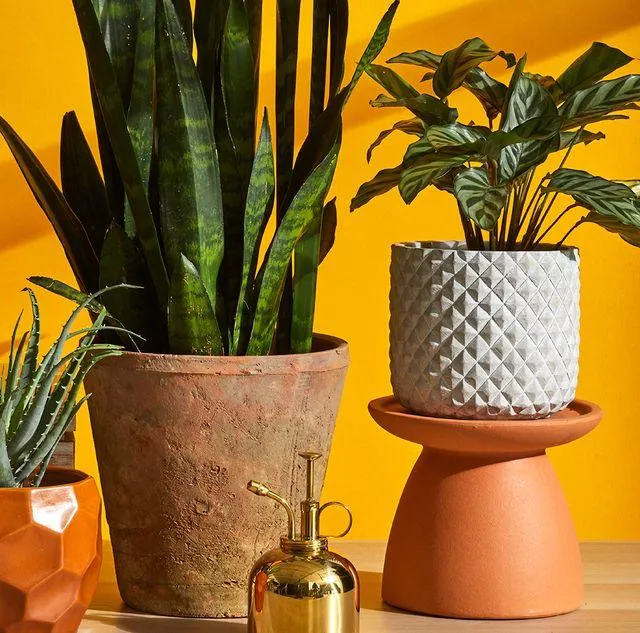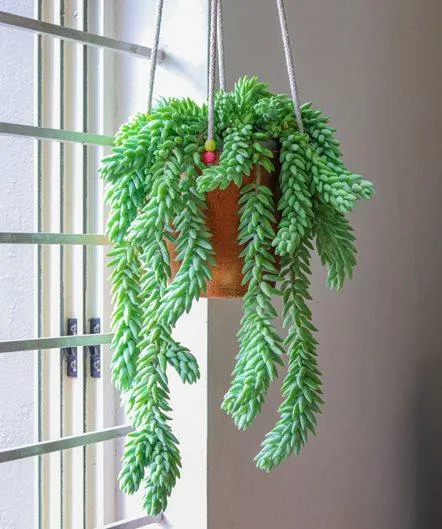The Ultimate Guide to Indoor Hanging Plants – All Your Questions Answered
Growing plants indoors can provide many benefits like improving air quality, adding life and beauty to your space. If you’re short on floor space or want plants displayed in an eye-catching way, hanging plants are a perfect solution. However, with so many options out there, it can be hard to choose the easiest types that are both low maintenance and guaranteed to thrive. In this comprehensive guide, I’ll cover all the bases to help you pick the perfect hanging plants to suit your needs.
What Are the Lowest Maintenance Indoor Hanging Plant Options?
When it comes to choosing the easiest hanging plants for indoors, a few top contenders stand out as being exceptionally low fuss. From my experience caring for over a dozen different varieties, these are sure to deliver results with minimal effort:
- Pothos (Epipremnum aureum) – Nicknamed the “devil’s ivy,” pothos is renowned as one of the most bulletproof houseplants. It thrives on neglect and can grow beautifully with only occasional watering. Its heart-shaped leaves come in various colors too.
- Spider plant (Chlorophytum comosum) – An air-purifying classic, spider plants love bright indirect sunlight and thrive on infrequent watering. Plus, they reward you with miniature plantlets on long stems.
- Philodendron (Philodendron spp.) – This genus includes several excellent varieties like heartleaf philodendron and brasil philodendron. Very forgiving of under-watering, they add lovely foliage to any space with minimal care needed.
- English ivy (Hedera helix) – Dependable, drought-tolerant and fast-growing, English ivy stays green year-round indoors. It also trails beautifully over the sides of pots for an eye-catching look.
These plants barely need watering at all, surviving for weeks without a drink. Their resilience against neglect makes them some of the lowest maintenance options for beginners or busy plant parents alike.
What Are the Low Light Indoor Hanging Plant Options?
If you have an area lacking bright natural light, there are still some nice choices for low light hanging plants. In general, these varieties tolerate low light conditions quite well:
- Chinese evergreen (Aglaonema spp.) – With colorful foliage ranging from pink to green, Chinese evergreen thrives in medium to low light. You can place it anywhere from several feet away from a window.
- Peperomia (Peperomia spp.) – These petite succulent-like plants come in an amazing variety, tolerating light levels from low to bright indirect light. Their unusual foliage makes them a unique addition.
- Zanzibar gem (Zamioculcas zamiifolia) – Commonly called ZZ plant, it’s known for being practically unkillable. You can place it clear across the room from any window with no issues.
- Pothos – As mentioned before, pothos does well in lower lights too. Its tolerance and trailing habit make it an excellent choice for shadier locations indoors.
As long as these plants get some indirect natural light each day, even just a few hours, they’ll do perfectly well hanging discretely away from windows wherever you like.

What Size Container Should I Use?
When hanging plants indoors for best appearance and growth, aim to select containers deep enough based on the plant size:
- For foliage trailing plants like pothos and English ivy, at least 8 inches diameter terracotta or plastic pots work well.
- Spider plants and philodendrons that typically grow to 8-12 inches prefer 10-inch hanging pots or baskets initially.
- Larger, upright plants such as Chinese evergreen or Zanzibar gem appreciate 12-inch hanging planters or suspended buckets for full maturity.
Always choose a container with drainage holes to avoid root rot. Plastic or wicker baskets also offer good air flow and drainage. When repotting, don’t cram roots – gently loosen them and use a soil mix suited for indoor plants.
What Is the Best Hanging Planter/Basket Design?
When it comes to decorative appeal, you have lots of styles to choose from. Here are some top hanging planter designs:
- Rattan or wicker baskets in intricately woven patterns – airy and naturally beautiful.
- Metal utility buckets with holes punched in the sides – industrial yet charming look.
- Macrame plant hangers in boho patterns knotted from jute or hemp rope – perfect for eclectic interiors.
- Suspended ceramic pots in colorful glazes and shapes – elegant modern flair.
- Wire mesh planters or globe-style cages – fun for showing off trailing vines.
- Felt or crochet pouches with drawstrings – cozy handmade charm.
Choose what best complements your home decor. And don’t forget adding a drainage saucer below for easy watering/care.
How Do I Care for Hanging Plants Properly?
Following some basic care tips will keep your hanging plants healthy and thriving:

- Water when the top 1-2 inches of soil is dry. Tip: Stick your finger in the soil to check moisture levels.
- Mist foliage weekly to increase humidity around plants and deter dust.
- Rotate hanging planters occasionally to encourage even growth.
- Repot only when roots fill the container for better growth.
- Prune off any dead or diseased leaves and stems.
- Fertilize monthly in the growing season using a diluted, water-soluble plant food.
- Wipe leaves and inspect for pests like spider mites or mealybugs regularly.
With some consistent, basic care like watering when dry, your plants will hang around for years rewarding you with their beauty.
How Do I Choose the Best Location to Showcase Hanging Plants?
When deciding where to hang plants for their advantages, I’d recommend these optimal locations:
- Above a kitchen sink – the humidity from cooking helps keep foliage fresh. It’s also a sunny spot ideal for low light varieties.
- By a southwest or west-facing window – trailing varieties will glow in afternoon/evening sun. Rotate pots weekly for even growth.
- From ceilings using Macrame hangers – plants float above decor for visual appeal. Beams or moldings offer anchor points indoors.
- Over shelves, cabinets or TVs – let vines garland down attractively. Use greenery to break up blank spaces.
- Inside large doorway entries – welcome guests with a lush “canopy” on each side. Great for low light spots too.
With creative hanging solutions, you can enjoy plants anywhere throughout living areas for beauty, mood-boosting greenery and abundant low maintenance choices.
Finally, What Tips Can You Offer for Long-Term Success?
By following a few best practices, your hanging plant collection can thrive for many years to come:
- Start with healthy, pest-free specimens from a local nursery.
- Quarantine any new plants away from others for 4 weeks to monitor their health.
- Acclimatize plants gradually to any new conditions by easing them into more/less light over 1-2 weeks.
- Prune off damaged or diseased parts to avoid issues spreading.
- Check plants frequently at first until you learn their individual watering needs.</li
Easiest Indoor Hanging Plants
Plant Care Level Light Needs Watering Pothos Low Low to Medium Let dry between waterings Spider Plant Low Medium to Bright Let dry between waterings Philodendron Low Low to Medium Let dry between waterings Peperomia Low Medium to Bright Let dry between waterings English Ivy Low Low to Medium Let dry between waterings FAQ
-
What are the easiest indoor hanging plants?
Pothos, spider plants, and philodendrons are basically considered some of the no-hassle hanging indoor plants. They don’t need much sunlight or water to thrive.

-
Do hanging plants need drainage holes?
It’s recommended that hanging planters have drainage holes to let excess water escape. Otherwise, the soil can stay soggy and the roots may rot. At the same time, some people have luck with planters without drainage – you just gotta be super careful not to overwater.
-
How often should you water hanging plants?
As a general rule, hangings plants like pothos and philodendrons only need water when the top of the soil feels dry to the touch. This is normally around once every 7-10 days. Nevertheless, the frequency can vary depending on things like light, humidity and season.
-
What is the best soil for hanging baskets?
A well-draining potting mix works great for most hanging plants. Look for a soil labeled for houseplants that contains ingredients like peat moss or coir to keep the soil light and porous. On the other hand, regular garden soil may stay too wet and heavy.
-
How do you fertilize hanging plants?
You can use a diluted liquid houseplant fertilizer every few weeks during the growing season (spring to fall). Dilute it to half or quarter strength, as directed on the label. But I’d only fertilize when the plant is actively growing – it may not need nutrients as much in winter.
-
Can hanging plants be divided or propagated?
Many hanging plants like pothos, spider plants and tradescantia can be easily divided or propagated from cuttings. This allows you to basically multiply your plants for free. Pothos roots so readily that just sticking a cutting in water can result in a brand new plant in no time! Here are some great articles on dividing and propagating different hangers.

-
What’s the best way to display hanging plants?
Hanging baskets and planters come in all kinds of shapes, sizes and materials – from woven rattan to modern metal designs. For the best look, pick a container that matches your home’s style. As for placement, try hanging plants near windows, above seating areas or from high shelves. And don’t be afraid to use multiple planters together for an awesome jungle vibe!
I hope this FAQ helps answer some basic questions about caring for the easiest indoor hanging plants! Let me know if any other plant questions come to mind.
-
